 W
WThe Animator's Survival Kit: A Manual of Methods, Principles, and Formulas for Classical, Computer, Games, Stop Motion, and Internet Animators (ISBN 0-5712-0228-4) is an instructional book by award-winning animator and director Richard Williams. The book includes techniques, advice, tips, tricks, and general information on the history of animation.
 W
WThe Annie Awards are accolades which the Los Angeles branch of the International Animated Film Association, ASIFA-Hollywood, has presented each year since 1972 to recognize excellence in animation shown in cinema and television. Originally designed to celebrate lifetime or career contributions to animation, the award has been given to individual works since 1992.
 W
WASIFA-Hollywood, an American non-profit organization in Los Angeles, California, United States, is a branch member of the "Association Internationale du Film d'Animation" or "ASIFA". Its purpose is to promote the art of film animation in a variety of ways, including its own archive and an annual awards presentation, the Annie Awards. It is also known as the International Animated Film Society.
 W
WThe history of Azerbaijani animation is so far a nearly unexplored field for Western film theory and history. Most of Azerbaijan's production of animation for cinema and television was created during Soviet times. A lengthy history interlocks between the art, politics and the ever-changing economy.
 W
WA chalk talk is an illustrated performance in which the speaker draws pictures to emphasize lecture points and create a memorable and entertaining experience for listeners. Chalk talks differ from other types of illustrated talks in their use of real-time illustration rather than static images. They achieved great popularity during the late nineteenth and early twentieth centuries, appearing in vaudeville shows, Chautauqua assemblies, religious rallies, and smaller venues. Since their inception, chalk talks have been both a popular form of entertainment and a pedagogical tool.
 W
WÉmile Cohl, born Émile Eugène Jean Louis Courtet, was a French caricaturist of the largely forgotten Incoherent Movement, cartoonist, and animator, called "The Father of the Animated Cartoon" and "The Oldest Parisian".
 W
WDisney Animation: The Illusion of Life is a book by Frank Thomas and Ollie Johnston, two of the key animators at Disney during the Golden Age of animation.
 W
WThe Disney animators' strike (1941) reflected anger at inequities of pay and privileges at the non-unionised Walt Disney Productions. As a famously autocratic employer, Walt Disney responded to the 5-week strike by firing many of his animators, but was eventually pressured into recognising the Screen Cartoonist's Guild (SCG).
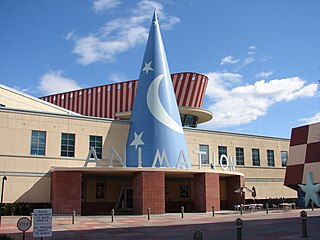 W
WThe Disney Renaissance was the period from 1989 to 1999 during which Walt Disney Feature Animation returned to producing critically and commercially successful animated films that were mostly based on well-known stories, much as the studio did during the era of Walt Disney during the 1930s to 1960s. The resurgence allowed Disney's animated films to become powerhouse successes at the domestic and foreign box office, earning much greater profit than most of the Disney films of previous eras.
 W
WWalter Elias Disney was an American entrepreneur, animator, writer, voice actor and film producer. A pioneer of the American animation industry, he introduced several developments in the production of cartoons. As a film producer, Disney holds the record for most Academy Awards earned by an individual, having won 22 Oscars from 59 nominations. He was presented with two Golden Globe Special Achievement Awards and an Emmy Award, among other honors. Several of his films are included in the National Film Registry by the Library of Congress.
 W
WThe Encyclopedia of Domestic Animation is a collection of biographies and filmographies of the masters of Russian and Soviet animation. It was released at the 12th Open Russian Festival of Animated Film in March 2007, and its general release happened on March 11. It is the first attempt at recording the complete history of Russian and Soviet animation.
 W
WFelix the Cat is a funny-animal cartoon character created in 1919 by Pat Sullivan and Otto Messmer during the silent film era. An anthropomorphic black cat with white eyes, a black body, and a giant grin, he is one of the most recognized cartoon characters in film history. Felix was the first animated character to attain a level of popularity sufficient to draw movie audiences.
 W
WGertie the Dinosaur is a 1914 animated short film by American cartoonist and animator Winsor McCay. It is the earliest animated film to feature a dinosaur. McCay first used the film before live audiences as an interactive part of his vaudeville act; the frisky, childlike Gertie did tricks at the command of her master. McCay's employer William Randolph Hearst curtailed McCay's vaudeville activities, so McCay added a live-action introductory sequence to the film for its theatrical release renamed Winsor McCay, the Famous Cartoonist, and Gertie. McCay abandoned a sequel, Gertie on Tour, after producing about a minute of footage.
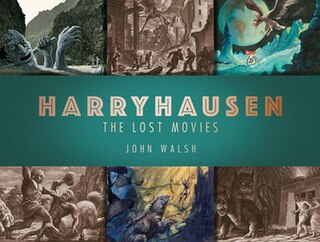 W
WHarryhausen: The Lost Movies is a book by John Walsh published September 10, 2019. This is a guide to unrealised cinema films of Ray Harryhausen from 1940s to the 2000s.
 W
WThe history of anime can be traced back to the start of the 20th century, with the earliest verifiable films dating from 1906. Before the advent of film, Japan already had a rich tradition of entertainment with colourful painted figures moving across the projection screen in utsushi-e (写し絵), a particular Japanese type of magic lantern show popular in the 19th century. Possibly inspired by European phantasmagoria shows, utushi-e showmen used mechanical slides and developed lightweight wooden projectors (furo) that were handheld so that several performers could each control the motions of different projected figures.
Kaiser is a short animated film, directed by the cartoonist Álvaro Marins, the Seth, in 1917. It is considered the first cartoon produced in Brazil.
 W
WKoko the Clown is an animated character created by Max Fleischer. He first appeared as the main protagonist in Out of the Inkwell (1918-1929), a major animated series of the silent era. Throughout the series, he goes on many adventures with his canine companion “Fitz the Dog”, who would later evolve into Bimbo in the Betty Boop cartoons.
 W
WLaugh-O-Gram Studio was a short-lived film studio that ran from 1921 to 1923, located on the second floor of the McConahay Building at 1127 East 31st in Kansas City, Missouri.
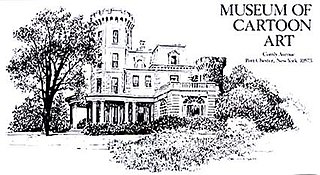 W
WThe National Cartoon Museum was an American museum dedicated to the collection, preservation and exhibition of cartoons, comic strips and animation. It was the brainchild of Mort Walker, creator of Beetle Bailey.
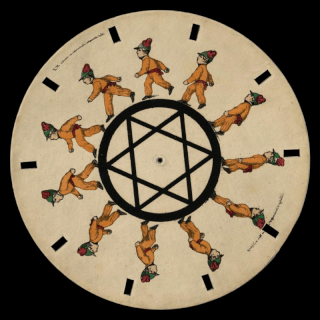 W
WThe phénakisticope was the first widespread animation device that created a fluent illusion of motion. Dubbed "Fantascope" and "Stroboscopische Scheiben" by its inventors, it has been known under very many other names until the French product name Phenakisticope became common. The phenakistiscope is regarded as one of the first forms of moving media entertainment that paved the way for the future motion picture and film industry. Like a GIF animation, it can only show a short continuous loop.
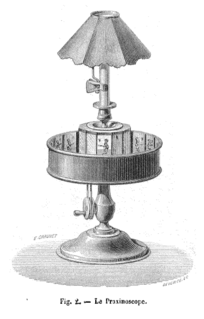 W
WThe praxinoscope was an animation device, the successor to the zoetrope. It was invented in France in 1877 by Charles-Émile Reynaud. Like the zoetrope, it used a strip of pictures placed around the inner surface of a spinning cylinder. The praxinoscope improved on the zoetrope by replacing its narrow viewing slits with an inner circle of mirrors, placed so that the reflections of the pictures appeared more or less stationary in position as the wheel turned. Someone looking in the mirrors would therefore see a rapid succession of images producing the illusion of motion, with a brighter and less distorted picture than the zoetrope offered.
 W
WRubber Hose animation was the first animation style that became standardized in the American animation industry. The defining feature of the style is "rubber hose limbs"—arms, and sometimes legs, that are typically simple, flowing curves, without articulation.
 W
WThe Society for Animation Studies (SAS) is an international learned society dedicated to the study of animation history and theory. It was founded by Harvey Deneroff in 1987. As of 2008 its president is Maureen Furniss.
 W
WLadislas Starevich was a Polish-Russian stop-motion animator notable as the author of the first puppet-animated film The Beautiful Leukanida (1912). He also used dead insects and other animals as protagonists of his films. Following the Russian Revolution, Starevich settled in France.
 W
WA strobe light or stroboscopic lamp, commonly called a strobe, is a device used to produce regular flashes of light. It is one of a number of devices that can be used as a stroboscope. The word originated from the Greek strobos, meaning "act of whirling".
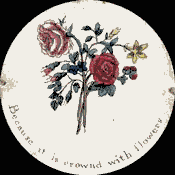 W
WA thaumatrope is an optical toy that was popular in the 19th century. A disk with a picture on each side is attached to two pieces of string. When the strings are twirled quickly between the fingers the two pictures appear to blend into one due to the persistence of vision.
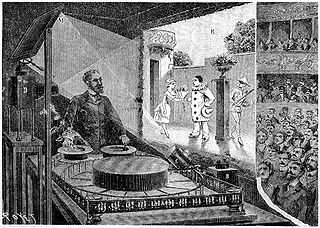 W
WThe Théâtre Optique is an animated moving picture system invented by Émile Reynaud and patented in 1888. From 28 October 1892 to March 1900 Reynaud gave over 12,800 shows to a total of over 500,000 visitors at the Musée Grévin in Paris. His Pantomimes Lumineuses series of animated films include Pauvre Pierrot and Autour d'une cabine. Reynaud's Théâtre Optique predated Auguste and Louis Lumière's first commercial, public screening of the cinematograph on 28 December 1895, which has long been seen as the birth of film.
 W
WUnited Productions of America, better known as UPA, was an American animation studio active from the 1940s through the 1970s. Beginning with industrial and World War II training films, UPA eventually produced theatrical shorts for Columbia Pictures such as the Mr. Magoo series. In 1956, UPA produced a television series for CBS, The Boing-Boing Show, hosted by Gerald McBoing Boing. In the 1960s, UPA produced syndicated Mr. Magoo and Dick Tracy television series and other series and specials, including Mister Magoo's Christmas Carol. UPA also produced two animated features, 1001 Arabian Nights and Gay Purr-ee, and distributed Japanese films from Toho Studios in the 1970s and 1980s. Gerald McBoing-Boing (2005–2007) was a more recent television series based on UPA's memorable character and licensed and co-produced by Cookie Jar Entertainment and Classic Media, for Cartoon Network. A French-American reboot television series of Mr. Magoo, another one of UPA's memorable characters has been announced by Xilam as their first collaboration with DreamWorks Animation, and is set to premiere on France 3 in France and Universal Kids.
 W
WA zoetrope is one of several pre-film animation devices that produce the illusion of motion by displaying a sequence of drawings or photographs showing progressive phases of that motion. It was basically a cylindrical variation of the phénakisticope, suggested almost immediately after the stroboscopic discs were introduced in 1833. The definitive version, with easily replaceable picture strips, was introduced as a toy by Milton Bradley in 1866 and became very successful.
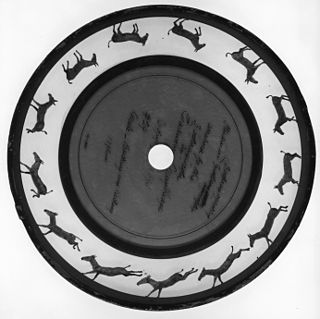 W
WThe zoöpraxiscope is an early device for displaying moving images and is considered an important predecessor of the movie projector. It was conceived by photographic pioneer Eadweard Muybridge in 1879. Muybridge used the projector in his public lectures from 1880 to 1895. The projector used 16" glass disks onto which Muybridge had an unidentified artist paint the sequences as silhouettes. This technique eliminated the backgrounds and enabled the creation of fanciful combinations and additional imaginary elements. Only one disk used photographic images, of a horse skeleton posed in different positions. A later series of 12" discs, made in 1892–1894, used outlines drawn by Erwin F. Faber that were printed onto the discs photographically, then colored by hand. These colored discs were probably never used in Muybridge's lectures. All images of the known 71 disks, including those of the photographic disk, were rendered in elongated form to compensate the distortion of the projection. The projector was related to other projecting phenakistiscopes and used some slotted metal shutter discs that were interchangeable for different picture disks or different effects on the screen. The machine was hand-cranked.